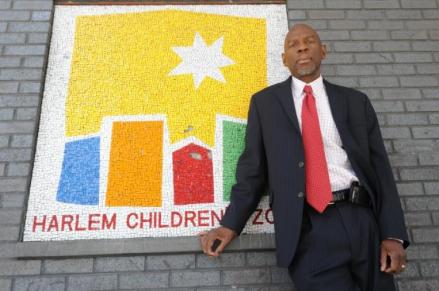A Beautiful Day in Englewood
 Today is my second day of my new job as a Literacy Coach in Englewood, Chicago. I have been in my office all day evaluating literacy data and decided to stretch my legs. I walk outside, and I am met with a beautiful sunny day, 80 degrees with bright blue skies. Outside of my new campus, there is a large open blacktop space where students run around freely playing with their friends and burning energy. I decided to walk a few laps and clear my head. I enjoy quiet moments because it affords me the opportunity to think through whatever thoughts are popping up in my head. After a lap or two, I unknowingly became distracted by the normalcy of the neighborhood; not necessarily what I expected. A light breeze moves across the neighborhood, tickling the bright green leaves emerging after a late winter. The fragrance of flowers permeated the air. The bright colors of the garden next to the black top beams brightly with pride. The space is quiet. A car or two drive by accompanied by gentle chirping of birds as they soak in the sun, and the sound of children laughing with their friends. The grandeur of the school building, standing tall in the sun, holding students within its body with care and wonder. You would think that this school was in the perfect location. Nestled among traditional homes, cars on the street parked guarding their homes as mindful golden retrievers would their owners. A few manicured lawns and broken windows, but nothing out of the ordinary in regards to your traditional neighborhood schools. But, in reality, this quaint little section of Englewood sits in the midst of a urban spread of Chicago that struggles with growth, crime, poverty, and lack of understanding.
Today is my second day of my new job as a Literacy Coach in Englewood, Chicago. I have been in my office all day evaluating literacy data and decided to stretch my legs. I walk outside, and I am met with a beautiful sunny day, 80 degrees with bright blue skies. Outside of my new campus, there is a large open blacktop space where students run around freely playing with their friends and burning energy. I decided to walk a few laps and clear my head. I enjoy quiet moments because it affords me the opportunity to think through whatever thoughts are popping up in my head. After a lap or two, I unknowingly became distracted by the normalcy of the neighborhood; not necessarily what I expected. A light breeze moves across the neighborhood, tickling the bright green leaves emerging after a late winter. The fragrance of flowers permeated the air. The bright colors of the garden next to the black top beams brightly with pride. The space is quiet. A car or two drive by accompanied by gentle chirping of birds as they soak in the sun, and the sound of children laughing with their friends. The grandeur of the school building, standing tall in the sun, holding students within its body with care and wonder. You would think that this school was in the perfect location. Nestled among traditional homes, cars on the street parked guarding their homes as mindful golden retrievers would their owners. A few manicured lawns and broken windows, but nothing out of the ordinary in regards to your traditional neighborhood schools. But, in reality, this quaint little section of Englewood sits in the midst of a urban spread of Chicago that struggles with growth, crime, poverty, and lack of understanding.
Later on in the day, the school went into a “soft” lock down. As kindergartens were enjoying their recess, gun shots broke the peacefulness of the day. Kindergarten students were brought in with a few of them crying; fearful of the unknown a few streets down. My office- on the ground floor- was temporary not safe due to three windows and the view of the street; and, to be safe, my coworkers and I were forced to find a different spot to work away; window blinds drawn, we continued working with students.
It was in the tears of these little ones, that I realized the reality that my students face everyday. Their lives are filled with moments of tear, fear, and bewilderment. Their homes, their lives, their families are intertwined into the fabric of Englewood. Their past, present and future are very much remembered, cultivated, and developed in the everyday events of others. My campus, even though it seemingly nestled in a harbor of safety, is still part of the matrix of Englewood. And, as an educator in this school, I must remember that each student faces more in a day than I can every imagine. They come to school with the goodness and badness of this neighborhood; and there is a unique beauty in this reality. They are the future of this neighborhood and deserve a chance to move it forward, to make it better, to be part of this narrative and story.
As educators, we must remember that every student, no matter where they come from, is full of promise and potential. It is our job to provide safety for all students. We must allow them to drop their guard for a moment, so that they can dance with the music, they can be overcome by the wonder of great literature, they can seek to learn, and become all they want and hope to be.
I am going to be honest. Walking around the blacktop, I watched closely to the cars that drove by, the sounds of the neighborhood, and to people walking. I have been told to be careful by others knowing the reputation of the neighborhood; and, I guess their fears have been unwillingly adopted by consciousness. I know that there is a reality that I must be cautious and respectful of, but I want to make sure that this does not control my narrative. However, it does bring into perspective the lives of my students. This is where they come from– this is their home. They do not get to leave like I do. Their constant awareness is as normal as their breathing. It is important for me to respect and understand this reality because it makes me become better for them. There is beauty here. There is strength and wonder in these students; and with that knowledge, I will be part of this neighborhood’s narrative. I want to be more than just a visitor, I will become part of its present and build a school in which the future shines and students can become more than what people believe they can be in this world.



